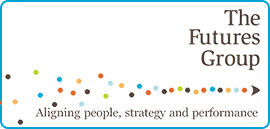The ‘growth mindset’ all workers need to cultivate
By Joanna York (Source BBC ) 31st October 2022
Bosses have long said workers need a growth mindset. Now, this skill is more important than ever – and it’s possible to master it.
Among daily changes within the world of work, there’s never been a better time for employees to cultivate skills to help them better manage workplace challenges. This is where the idea of the ‘growth mindset’ comes roaring in – the belief that workers are capable of actively improving their abilities, rather than being innately able or unable to complete certain tasks.
Yet, this ‘can do’ mindset can be more difficult to harness than it seems. Doing so means getting comfortable with embracing hurdles, learning from criticism and persisting when things get difficult.
Even if we believe that such tenacity is worth developing, in practise, doubts and fears can dominate. “We’re wired to believe our emotions,” says Elaine Elliott-Moskwa, psychologist and author of The Growth Mindset Workbook, based in Princeton, New Jersey, US. “When a person says ‘I feel I’m not good enough’, that feeling is very powerful, even though that is a belief about their abilities.”
At the heart of the growth mindset is learning to overcome such feelings of inability or inadequacy in the face of obstacles, and instead recognise an opportunity to learn. And there can be profound benefits to cultivating this approach. Employees with a growth mindset can tap into a useful skillset to manage stress, build supportive relationships with colleagues, cope with failure and develop attributes to help further their careers.
What is growth mindset?
Growth mindset first emerged in 1988 as a theory relating to education. “It had to do with why smart kids fail in the face of difficulty despite their actual abilities,” says Elliott-Moskwa. The idea was that the students’ attitude towards taking on a challenge, rather than their innate ability, was a key determiner for success. In other words, our ideas about how able we are to do something can have a significant impact on the outcome of a task.
Approaching a challenge with a growth mindset over a fixed mindset is a choice anyone can take
Stanford professor and psychologist Carol Dweck narrowed this concept down to two approaches that can determine results: ‘fixed mindset’ and ‘growth mindset’. “Fixed mindset is the idea that your abilities are high or low, and there’s not too much you can do to change it,” says Elliott-Moskwa, “whereas the growth mindset is the view that your abilities are malleable or changeable.”
While some people may naturally lean more one way than the other, people don’t outright have either a fixed or growth mindset to all problems, full stop – instead, approaching a challenge with a growth mindset over a fixed mindset is a choice anyone can take.
For many people, though, moments of difficulty often spur fixed mindsets. For example, says Elliott-Moskwa, when people take in criticism from a boss, or struggle with a new task, they might feel a sense of inadequacy. In these situations, a fixed-mindset response might be “I’m not good enough”, or “I can’t do it”, she says.
By contrast, a growth mindset approach takes a different tack on the same situation. People with growth mindsets don’t interpret such moments as personal failings, but instead recognise a need to improve. Crucially, people working with a growth mindset believe they are capable of such improvement, and are able to break down challenges into achievable steps.
This means getting out of the comfort zone and accepting a certain level of risk, uncertainty and the potential for failure that comes with trying something new. “It feels a little bit uncomfortable, and also a little bit exciting,” says Isabella Venour, a London-based mindset coach, who helps professionals understand the role their beliefs, values and patterns of thinking play in the workplace. “You’ve got a bit of risk that it might go wrong, but you’ve also got the potential to learn something and to grow as an individual.”
A growth mindset means believing you can actively improve your abilities, rather than simply being ‘bad’ at some tasks.
Why is growth mindset important in the workplace right now?
A can-do approach is always a plus in the workplace – it demonstrates that workers are adaptable and willing to evolve within their jobs and organisations. But fostering a growth mindset plays an important role in helping workers navigate turbulence as well as improve resilience as they feel more confident and capable handling difficulties.
This is essential at a time when many employees are struggling with wellbeing in the wake of the pandemic. Gallup’s 2022 State of the Workforce Report showed that stress among global workers has risen consistently since the pandemic began in 2020. A similar global survey by the Wellbeing Project showed that in 2022 resilience is particularly low, and the risk of burnout remains, especially among non-managers. “People are being pulled in all directions and stretched thin as pressures of work and life are spilling into one another,” says Venour. “Business leaders are noticing that their employees are struggling to cope with everyday challenges.”
Growth mindset not only provides a framework for dealing with challenges, but a way to break those challenges down in to manageable steps. “Often, if we’re feeling pressure when we’re not in a growth mindset, we tend to focus on what we can’t control,” says Venour. “It’s a lot more useful to focus on what we can influence.” This starts with workers identifying personal strengths that they can utilise, then making a plan to improve areas of weakness.
Taking a pragmatic approach can help cut through overwhelm and also help workers lay down boundaries – something many remote workers are struggling to do. For example, “if your boss gives you a task that you feel is unrealistic, it’s easier to say you’re not sure about the timing or you need an extra meeting to give you more clarity”, says Venour. “Because you are confident in your abilities and you don’t see weaknesses as something to beat yourself up about it. You’re able to say, I need some support here.”
[A growth mindset] encourages people to focus on feedback rather than failure – Isabella Venour
It is possible to practice growth mindset individually, but if a business encourages the whole workforce to adopt a growth mindset, the results can be even more powerful. “It encourages people to focus on feedback rather than failure,” says Venour. This can help motivate employees to tackle challenging projects, and create an in-built culture of learning. Studies suggest this is something that workers overwhelmingly want: in a 2022 McKinsey & Company study, 41% of workers said the foremost reason they would quit a job is lack of career development and advancement.
How can you improve growth mindset?
The first step towards encouraging a growth mindset is personal awareness: the ability to identify fixed-mindset thinking when it occurs, which often manifests as feelings of discomfort or inadequacy in the face of a challenge.
First, Elliott-Moskwa advises recognising and accepting such feelings – instead of beating yourself up about them. “Then, mindfully make another choice to take an action step in keeping with what you would be doing if you had growth mindset – the belief that you could increase your abilities,” she says.
To help clients approach obstacles with a growth mindset, Venour often breaks down challenges that feel overwhelming into smaller pieces. For example, if a worker feels unable to give a presentation in front of colleagues, “how much of that is emotional and how much of that is factual?”, she asks. “Can they talk? Yes. Have they spoken in front of more than one person before? Yes. Have they done presentation slides before? Yes. So, if there are elements that they can do, [what] is the bit that they’re not comfortable with?”
Narrowing down an overwhelming challenge to a specific point of difficulty helps workers focus, and reduces the element of learning required to an achievable level.
Often, the learning itself requires asking for help. One of the key concepts of growth mindset is seeing others as inspiration rather than competition, an approach that can help foster collaborative teams. “If workers view others as resources and not as competitors, they’re open to sharing other people’s skills and abilities and learning from fellow employees,” says Elliott-Moskwa.
Over time, recognising fixed mindset and practicing a growth mindset can become easier, and the prospect of taking on challenges less daunting. “Growth mindset is an empowering attitude,” says Venour. “You can really develop and grow over time as a person.”






